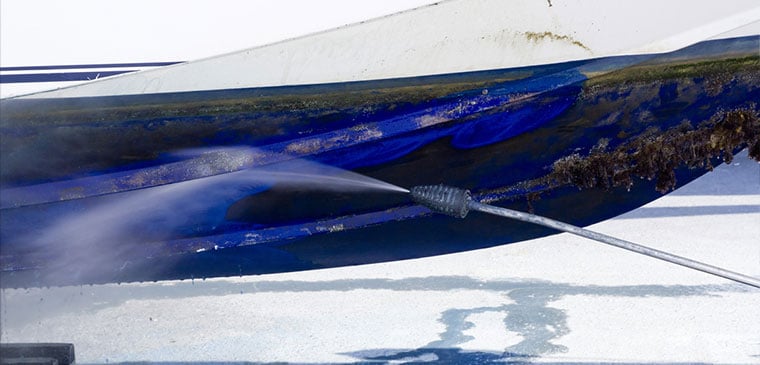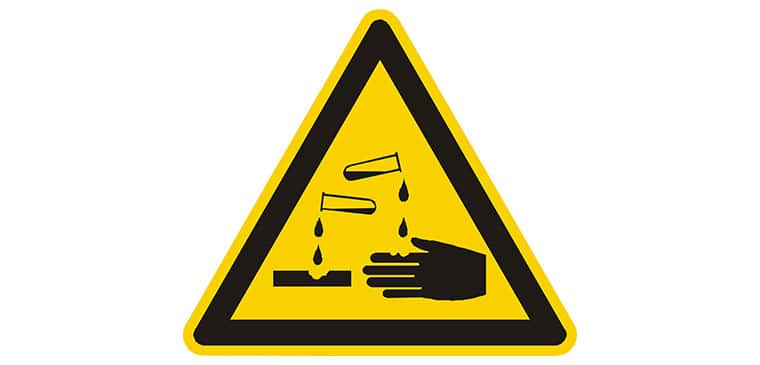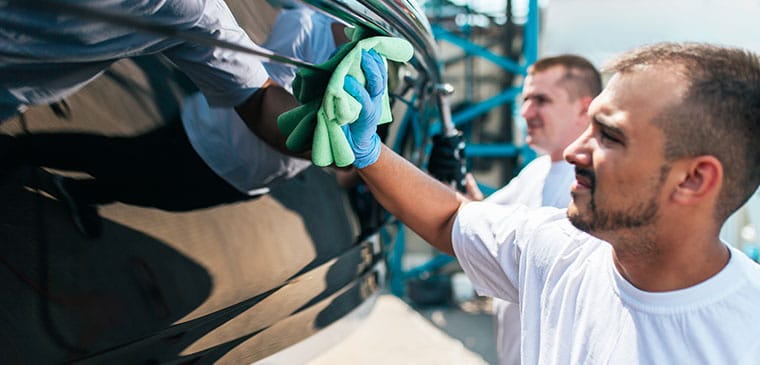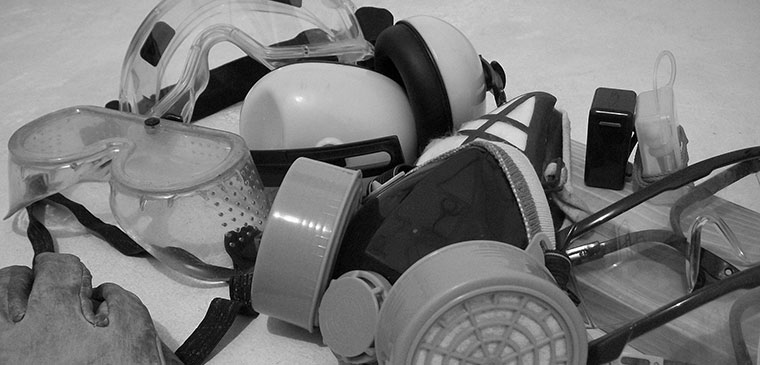Barnacles are small crustaceans which secrete a type of fast setting cement that is one of the strongest natural glues known to man! So is it any wonder that a barnacle buildup can be a real pain to remove from your hull? You may as well be dealing with concrete! If you’re fighting a losing battle with the barnacles, this blog will help you reclaim your boat hull. We focus on fiberglass boat hulls in this article so do check if your boat hull is made of a different material.
Getting rid of barnacles from your fiberglass boat bottom is much easier when done on land so, before you start, make sure you have somewhere dry to lift and leave your boat whilst you are carrying out this essential work. Cleaning your boat bottom is possible in the water but it is much more difficult and requires you to have specialist diving equipment.
Manual barnacle removal
To pressure wash or not?
The first method of barnacle removal is with good old elbow grease! Many people would prefer to use a pressure washer to remove barnacle buildup but a pressure washer is not that effective on young barnacles and can actually be detrimental to your boat hull by causing damage to the gel coat. Therefore, we suggest you only use a pressure washer if the barnacle build up is extensive and cover large areas of the hull.
If you are pressure washing barnacles off the hull be careful to spray in parallel to the hull surface so as not to make any gouges in the fibreglass, something that is easy to do with a fine spray at high pressure.
Scraping the hull surface
With smaller patches of barnacles (or patches left after pressure washing) it is easiest and safest to remove them using a scraper and some elbow grease. To protect the hull and help minimise the risk of damage it is best to use the edge of a wooden or plastic scraper, although you may have to resort to a metal paint scraper if the barnacles are proving difficult to remove. You are aiming to prise off the barnacles by getting the scraper in underneath the edge of the shell so scrape in parallel to the hull surface.
Once the barnacle shells have been removed, barnacles can leave behind a calcium-based residue known as a husk, to help you remove this you will need to use a chemical-based technique.
Chemical barnacle removal
Mild chemical barnacle removal
Mild boat hull cleaners contain either a calcium remover (lime remover) or a weaker acid such as oxalic, phosphoric or citric acid to help remove the barnacle residue from the boat hull. You can apply this using a nylon brush, give time for the chemicals to take effect before washing and gently scraping off.
To get rid of any remaining barnacles and/or husks you may need to repeat the application of a mild boat cleaner several times.
Heavy duty chemical barnacle removal
If the milder forms of acid and hull cleaner are not effective after several attempts, you will need to use a much more concentrated acid known as muriatic acid. Muriatic acid is a type of hydrochloric acid (HCl) that is extremely corrosive.
Hydrochloric acid is an extremely strong acid which can damage your eyes, skin and lungs as well as causing damage to paint, gel coat, metal and plastics on your boat and even potentially dissolving your boat’s trailer.
We suggest that only professionals use this type of acid as a hull cleaner.
Finishing touches
Once all the barnacles and their husks have been removed you will need to apply a rubbing compound with a polisher and wool pad by hand to help remove any scratches to the hull as well as removing oxidation. You can then polish and wax your hull to bring it back to a beautiful clean finish.
If the gauges from removing barnacles from your boat hull run deeper you will need to fill them with resin before using sandpaper to sand down and then reapply paint to your hull.
Safety considerations
Use rubber gloves when removing barnacles to help prevent their sharp shells from cutting your skin and wear eye protection to prevent any small pieces of shell from scratching and damaging your eyes.
If using chemicals be sure to read and follow the directions and safety information on the packaging. Remember that a lot of these chemicals and bottom paint can be toxic to marine life so dispose of any excess responsibly.
Use a face shield or full face mask, a respirator and acid-proof gloves and use plastic sheets to cover your boat’s trailer if you are using muriatic acid.
Dilute any acid to the recommended concentration before beginning.
Keep plenty of fresh water nearby to dilute any acid spillage should one occur.
If in doubt, seek expert advice or get a professional to carry out the work for you.
Barnacle prevention
Removing barnacles is not a pleasant job so your best bet is to do as much as you can to prevent a barnacle infestation in the first place by using some kind of antifouling. Once you have finished cleaning barnacles from your hull you should always ensure you have some form of antifouling in place to help minimise re-growth in the future.
Not all antifouling is made equal and to have the best chance of keeping your boat’s hull clean and clear of barnacles we recommend using our ultrasonic antifouling devices. These use small transducers attached to the boat hull to emit a very high frequency sound wave that causes the hull and the water around the hull to vibrate, preventing the attachment of biofouling.
Ultrasonic antifouling techniques are not only particularly effective as an antifouling control, but they cause far less damage to the environment than traditional antifouling or bottom paints. Contact us if you would like more information on which ultrasonic antifouling product best meets your needs.





